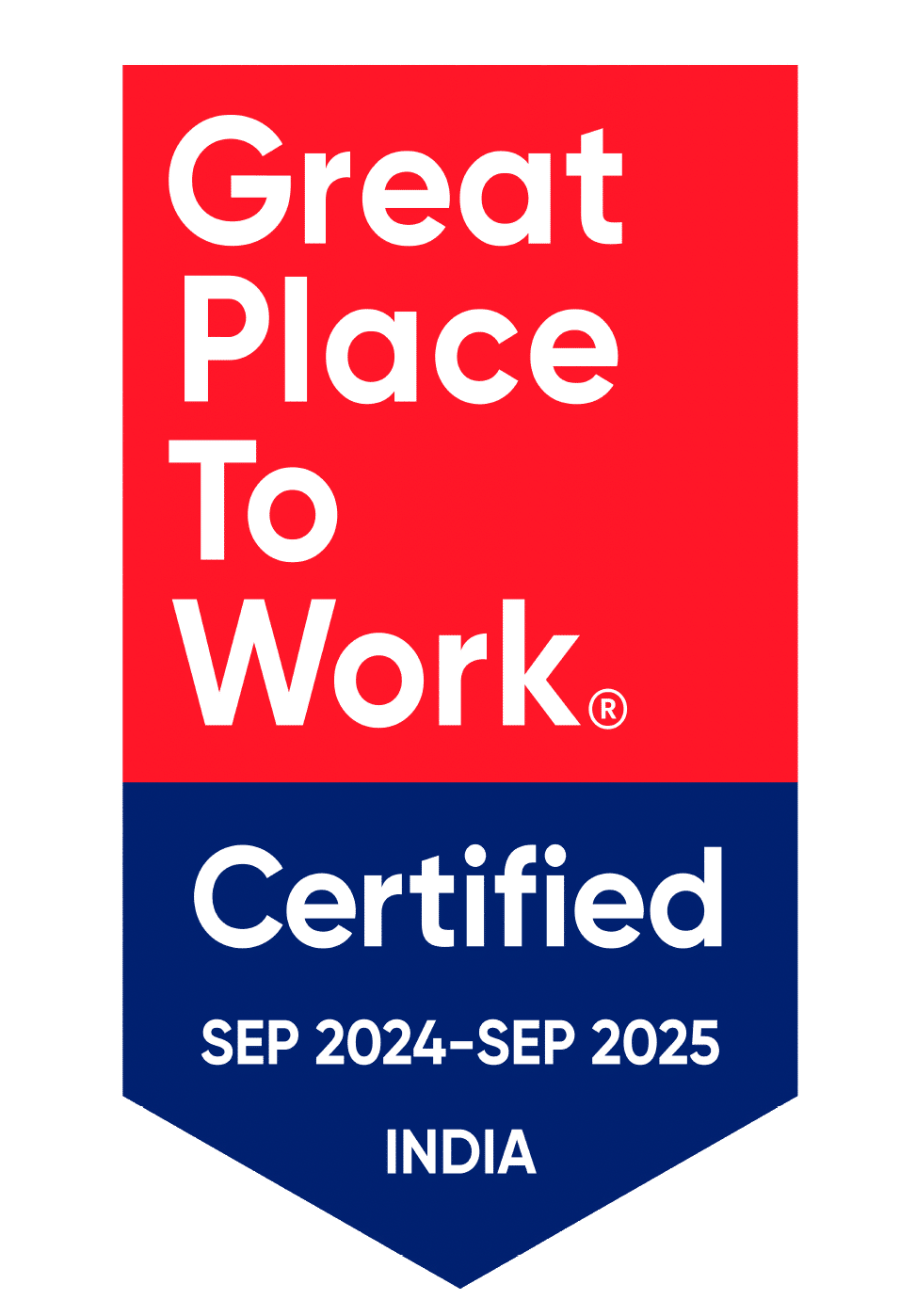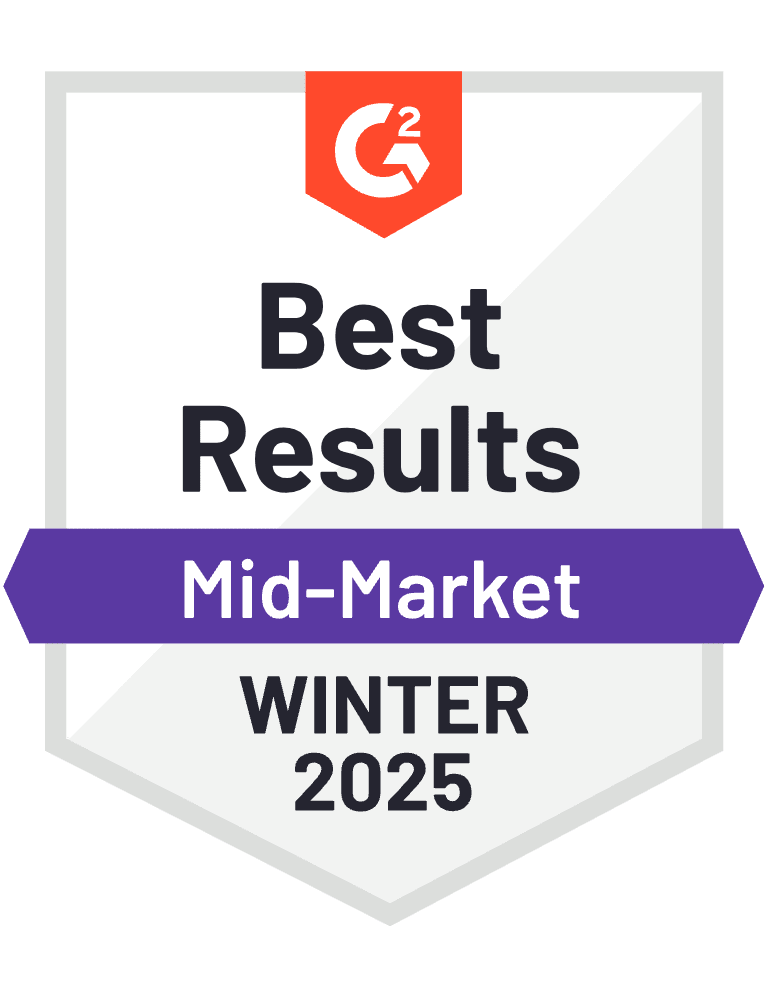The Best 10 Small Business Expense Tracking Apps in 2025
Tracking expenses regularly helps spot unnecessary spending and ensures all money is properly managed. A report by PwC highlights that companies lose about 5% of their revenue each year to fraud, often due to expense oversight.
However, managing expenses manually can be time-consuming and inefficient. Without automation, you might end up spending hours on repetitive administrative tasks instead of focusing on impactful decisions.
Thankfully, this challenge can be resolved with the right business expense tracker. Let’s explore how these tools can simplify processes and save time.
What is Expense Tracking Software?
Every business has its own way of managing expenses, but in recent years, many have turned to software solutions for efficiency.
The primary goal of a top-notch expense tracking app is to keep your financial management on the point.
An expense tracking platform gives you a unified view of spending, including employee purchases, subscriptions, payroll, and other costs. These tools often include automation features, simplifying the expense management process significantly.
Why Use an Expense Tracker App for Managing Finances in Organisation?
Using a business expense tracker app offers a host of benefits, including:
- Convenience: Replaces paper-based systems with an easy-to-use digital platform that’s accessible anywhere.
- Automation: Features like receipt scanning reduce manual entry and errors.
- Real-Time Insights: Instant reporting allows for on-the-go monitoring and timely decisions.
- Intelligent Categorization: Automatically sorts expenses for more efficient budgeting.
- Enhanced Security: Protects financial data with encryption and authentication.
- Seamless Integration: Links with accounting software to streamline reconciliation and maintain accurate financial records.
These apps are essential for improving efficiency, maintaining financial clarity, and optimizing expense management.
Top Business Expense Tracking Apps for 2025
1. Expense Tracker 365
Overview: Expense Tracker 365 is a comprehensive solution designed for businesses of all sizes. It offers advanced automation and multi-currency support, making it a versatile tool for global operations. This app is packed with features that simplify financial management and reduce administrative burdens.
Features:
- Automated Receipt Scanning: The app’s OCR technology accurately scans and digitizes receipts, reducing manual data entry.
- Real-Time Reporting: Provides up-to-the-minute expense insights, helping businesses monitor spending trends and make informed decisions.
- Integration: Expense tracker 365 integrates with SharePoint, outlook and teams ensuring a unified financial ecosystem.
- Unlimited Virtual Corporate Cards: Supports the issuance of virtual cards, enabling controlled employee spending and improved accountability.
Ease of Use: The intuitive interface ensures a quick setup and a smooth user experience. While the app is feature-packed, new users might require some time to explore its full potential.
Pricing: Flexible plans are available, allowing businesses to choose based on their specific needs and scale.
Drawback: Due to its extensive features, there can be a slight learning curve for first-time users, especially those unfamiliar with advanced financial tools.
2. Zoho Expense
Overview: Zoho Expense is a versatile app that’s part of the larger Zoho ecosystem. It’s particularly popular among small and medium-sized businesses for its ease of use and affordability.
Features:
- Receipt Scanning: Automatically extracts data from receipts, reducing manual entry and errors.
- Multi-Currency Support: Enables businesses operating in multiple countries to track expenses in various currencies.
- Expense Limits and Budget Control: Allows businesses to set and monitor spending limits, ensuring adherence to budgets.
Ease of Use: With a simple setup process and user-friendly interface, Zoho Expense is ideal for businesses with minimal technical expertise.
Pricing: Offers competitive pricing plans suitable for businesses of different sizes. Advanced features are available in higher-tier plans, providing scalability.
Drawback: Some advanced features, such as in-depth analytics or additional integrations, may require an upgrade to premium plans.
3. Expensify
Overview: Expensify is a popular choice for businesses seeking robust receipt scanning and automation capabilities. It caters to organizations of varying sizes, offering a seamless expense management experience.
Features:
- OCR-Based Receipt Scanning: The app’s AI-driven technology extracts information from receipts with exceptional accuracy.
- Multi-Currency Support: Facilitates international transactions by automatically converting currencies.
- Policy Enforcement: Allows businesses to set custom expense policies and ensures compliance with minimal manual oversight.
Ease of Use: Designed to accommodate users of all technical levels, Expensify is straightforward and efficient.
Pricing: A free plan is available for basic expense tracking. Premium features, including advanced analytics and integrations, are accessible in higher-tier plans.
Drawback: Premium plans may appear costly for small businesses or startups with limited budgets.
4. SAP Concur
Overview: SAP Concur is a robust expense tracking solution tailored for large enterprises. Its scalability and integration capabilities make it a preferred choice for complex financial operations.
Features:
- Accounting System Integration: Synchronizes with enterprise accounting systems, streamlining reconciliation.
- Real-Time Reporting: Delivers actionable insights through detailed financial reports.
- Travel Management Tools: Includes travel booking and expense tracking in one platform.
Ease of Use: Although configuration is required during the initial setup, the interface is user-friendly once operational.
Pricing: Customized pricing plans cater to large enterprises with unique needs.
Drawback: The extensive features may be excessive for smaller businesses, leading to underutilization.
5. Rydoo
Overview: Rydoo is a cost-effective solution designed for small and medium-sized businesses (SMBs). It offers offline capabilities, making it a reliable choice for remote teams.
Features:
- Receipt Scanning: Simplifies expense tracking with efficient data capture from physical and digital receipts.
- Offline Mode: Ensures continued functionality even without internet access.
- Accounting Integration: Works seamlessly with popular accounting software, enhancing workflow efficiency.
Ease of Use: The setup process is straightforward, and the intuitive navigation ensures minimal training requirements.
Pricing: Affordable plans cater specifically to SMBs, providing value for money.
Drawback: Lacks advanced features required for managing large-scale enterprise finances.
6. Rippling
Overview: Rippling is a comprehensive expense management tool that integrates seamlessly with payroll and HR systems. It’s an ideal choice for businesses already using Rippling’s other services.
Features:
- Automated Expense Tracking: Simplifies tracking and categorization with minimal manual input.
- Employee Reimbursements: Ensures timely processing of expense claims.
- Corporate Card Management: Supports multi-currency transactions and offers virtual and physical card options.
Ease of Use: The platform is intuitive, especially for businesses familiar with Rippling’s HR or payroll tools.
Pricing: Offers customized pricing based on the size and requirements of the business.
Drawback: Best suited for companies already using Rippling’s ecosystem, limiting its appeal to standalone users.
7. Volo pay
- Corporate Cards: Provides physical and virtual cards with spending limits and tracking capabilities.
- Invoice Management: Simplifies vendor payments and expense tracking.
- Multi-Currency Support: Facilitates international operations with real-time currency conversions.
Ease of Use: The interface is streamlined and accessible, making it easy to adopt for teams of varying sizes.
Pricing: Affordable pricing plans cater to small businesses and large enterprises alike.
Drawback: Some advanced features are tailored for larger organizations, limiting usability for startups.
8. QuickBooks Online
Overview: QuickBooks Online is a trusted name in accounting and financial management. Its robust expense tracking features make it an indispensable tool for businesses worldwide.
Features:
- Expense Categorization: Automates the sorting of expenses into predefined categories.
- Receipt Capture: Enables quick and accurate recording of transactions.
- Tax Preparation Tools: Simplifies tax filing with organized financial records.
Ease of Use: The platform is user-friendly, especially for those familiar with accounting software.
Pricing: Offers multiple pricing tiers, from basic plans to advanced solutions for larger organizations.
Drawback: Small businesses may find some features redundant or unnecessary.
9. FreshBooks
Overview: FreshBooks is a cloud-based accounting solution with powerful expense tracking capabilities. It’s particularly favoured by freelancers and small businesses.
Features:
- Automated Expense Tracking: Simplifies financial management with minimal manual intervention.
- Client Billing: Streamlines invoicing and payment tracking.
- Integration with Payment Processors: Enhances cash flow management.
Ease of Use: Designed with small businesses in mind, FreshBooks offers an intuitive interface that’s easy to navigate.
Pricing: Competitive pricing plans provide value for money, starting at budget-friendly rates.
Drawback: Lacks the scalability required for larger organizations.
10. Wave
Overview: Wave is a free expense tracking solution perfect for startups and small businesses. Its simplicity and affordability make it a popular choice.
Features:
- Expense Tracking: Provides essential tools for monitoring and managing business expenses.
- Invoicing and Receipt Scanning: Simplifies record-keeping with integrated features.
- Payroll Integration: Ensures seamless financial operations.
Ease of Use: With a minimal learning curve, Wave is accessible even to those without prior experience in financial tools.
Pricing: Free for basic features, with optional paid services like payroll available.
Drawback: Limited scalability and features compared to premium tools.
How Does an Expense Tracker 365 Work?
Expense trackers 365 automate your financial management by automating routine tasks.
When employees make business-related purchases, they can immediately report expenses through a mobile app. Some tools even allow automated receipt capture, reducing the hassle of data entry.
The software forwards these reports to the appropriate teams for reimbursement, tracks payroll, vendor payments, and subscriptions automatically, and centralizes all expense data for better visibility.
By using an expense tracking app, businesses can minimize errors, save time, and gain full transparency into their spending.
With tools like Expense Tracker 365, managing your expenses has never been easier. It’s time to simplify your financial workflows and focus on what really matters—growing your business with just $49 Per month.
The Benefits of Using Business Expense Tracker Apps
Managing business expenses efficiently is crucial for maintaining financial stability and ensuring smooth operations. Business expense tracker apps have emerged as invaluable tools for organizations seeking to streamline their financial processes. Here are the primary advantages of using these apps:
1. Improved Efficiency
Business expense tracker apps significantly enhance the efficiency of expense management by replacing manual, time-consuming methods with automated systems. Employees can effortlessly capture receipts using their smartphones, and the app automatically categorizes expenses. This streamlined process expedites approvals and reimbursements, saving time for employees and finance teams alike.
2. Enhanced Accuracy
Automating expense tracking reduces human errors associated with manual data entry and calculations. These apps ensure more accurate expense reports, minimizing discrepancies and potential compliance issues. This level of precision fosters confidence in the organization’s financial management practices.
3. Policy Compliance
Expense tracker apps allow businesses to enforce company policies with ease. They include features for setting spending limits, defining permissible expense categories, and creating approval workflows. By integrating compliance checks into the reporting process, these apps reduce non-compliance risks and help businesses avoid financial and legal complications.
4.Cost Control
With real-time visibility into spending patterns, businesses can identify areas of excessive expenditure and implement cost-saving measures. Comprehensive analytics provided by these apps empower finance teams to make data-driven decisions, ensuring resources are allocated prudently.
5. Audit Trail and Record-Keeping
A detailed audit trail is essential for transparency and compliance during financial audits. Expense tracker apps automatically maintain records of all expense activities, from submission to approval and reimbursement. This simplifies the auditing process, saving time and effort for both auditors and company personnel.
6. Scalability
As businesses grow, their expense management needs evolve. Expense tracker apps can scale to accommodate increasing users and transaction volumes, making them suitable for startups and large enterprises alike. They ensure consistent performance; even as organizational demands increase.
7. Employee Satisfaction
Manual expense reporting can be tedious and frustrating, leading to delays and dissatisfaction. Expense tracker apps make the process seamless, enabling employees to capture receipts and submit reports on the go. Faster reimbursements boost employee morale and productivity.
Key Features to Look for in Expense Tracking Apps
When selecting an expense tracking app for your business, consider the following essential features:
1. Expense Reporting
A robust app should enable employees to create and submit detailed expense reports. It should support various expense types and allow receipt attachments for accuracy. This feature streamlines reporting and provides valuable insights into spending trends.
2. User-Friendly Interface
Ease of use is critical for widespread adoption. The app should feature an intuitive design with logical menus, clear icons, and simple navigation. A user-friendly interface reduces training time and ensures smooth operations.
3. Real-Time Transaction Ledger
A real-time ledger helps users track expenses as they occur, providing instant visibility into transactions. This feature eliminates manual data entry and enhances financial planning by offering up-to-date insights.
4. Expense Categories and Customization
The app should include predefined categories for common expenses and allow customization to align with your organization’s unique requirements. Flexible categorization simplifies data analysis and reporting.
5. Mobile Accessibility
Mobile-friendly apps enable users to track expenses from anywhere, ensuring real-time reporting. Compatibility with iOS and Android devices, along with offline functionality, enhances convenience.
6. Data Analytics and Insights
Advanced analytics features provide visual reports on spending patterns, cost-saving opportunities, and other key metrics. These insights enable businesses to make informed financial decisions.
7. Security and Fraud Prevention
Top-tier apps prioritize data security with encryption and fraud detection mechanisms. These features protect sensitive financial data and prevent unauthorized activities.
8. Approval Workflows
Customizable approval workflows streamline the review process, ensuring policy compliance and reducing delays. Notifications for approvers further enhance efficiency.
9. Invoice and Receipt Management
Effective receipt management features, such as scanning and e-receipt integration, simplify record-keeping and retrieval. This ensures smooth audits and enhances transparency.
10. Reimbursement Compatibility
A good app supports multiple reimbursement methods, enabling quick and hassle-free payments. Automated reimbursements save time and improve employee satisfaction.
11. Accounting Integrations
Seamless integration with accounting software like QuickBooks or Xero ensures accurate data transfer and reduces manual efforts, improving overall financial reporting.
12. Corporate Card Sync
Corporate card integration automates transaction logging and reconciliation, simplifying expense tracking and ensuring all expenditures are accounted for promptly.
13. Bank Account Sync
Syncing bank accounts with the app automates transaction imports, offering a holistic view of spending activities and enhancing reconciliation accuracy.
14. Expense Policy Compliance
Customizable policy rules within the app help flag non-compliant expenses, ensuring adherence to company guidelines and minimizing violations.
15. Customer Support and Updates
Reliable customer service and regular updates are essential for maintaining app performance and addressing user concerns promptly.
Criteria for Choosing the Best Expense Tracking App
When selecting an expense tracker app, evaluate the following:
1. Budget
Choose an app that balances functionality and cost. Ensure it meets your needs without overspending on unnecessary features.
2. Versatility
The app should be compatible with multiple devices and cater to users with varying technical proficiencies.
3. Ease of Use
An intuitive design ensures quick adoption and minimizes errors in expense tracking.
4. Scalability
Choosing solution that grows with your business, accommodating increased users and transactions seamlessly.
5. Integrations
Ensure the app integrates smoothly with accounting software, payroll systems, and other essential tools for cohesive financial management.
6. Customer Service
Choose a provider with responsive customer support and a proven track record of timely updates.
How Expense Tracker 365 Simplifies Expense Management
Expense Tracker 365 offers a comprehensive solution for managing business expenses efficiently. Here are its standout features:
- Virtual and Physical Cards: Assign virtual or physical cards with spending controls to employees for seamless payments.
- Employee Reimbursement: Real-time receipt scanning and reimbursement requests simplify the process.
- Multi-Level Approvals: Set up multi-tier approval workflows with spending limits and instant notifications.
- Spend Controls: Define department-wise spending limits and enforce company-wide policies.
Conclusion
Managing expenses can be one of the trickiest parts of running a business, but it doesn’t have to be. The apps we’ve highlighted for 2025 are designed to make your life easier by automating tasks, reducing errors, and giving you better visibility into where your money is going.
Whether you need something simple to track day-to-day spending or a more robust solution to handle reimbursements and analytics, there’s an app out there for you. Picking the right one can save you time, money, and a lot of headaches—letting you focus on what matters most: growing your business. So, explore your options, find the one that fits, and make managing your finances a breeze.
Frequently Asked Questions
1. What is the best small business expense tracker?
The best small business expense trackers include platforms like Expense Tracker 365, Volo pay, Expensify, and Rippling. These offer features such as expense tracking, receipt scanning, and financial reporting.
2. How do small businesses keep track of expenses?
Small businesses typically track expenses by using accounting software, expense tracking apps, manual spreadsheets, or integrating tools with their financial systems to monitor spending.
3. Does Expense Tracker 365 have corporate cards?
Yes, Expense Tracker 365 offers corporate card solutions, allowing businesses to manage company spending more efficiently.
4. Can Expense Tracker 365 integrate with SharePoint?
Yes, Expense Tracker 365 can integrate with SharePoint to provide seamless document management and reporting capabilities.
5. Is Expense Tracker 365 easy to use for remote teams managing expenses?
Yes, Expense Tracker 365 is designed to be user-friendly for remote teams, providing features like real-time expense tracking, seamless collaboration, and easy access to reports from anywhere.














_Rapo0hRMBy.png)










